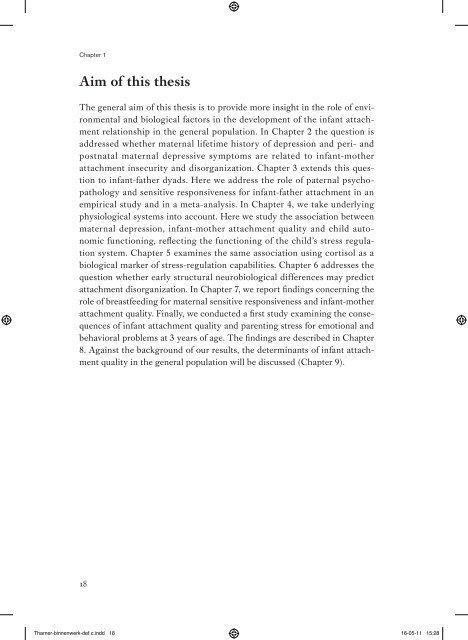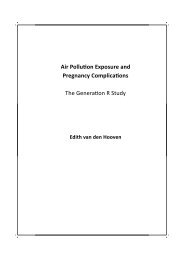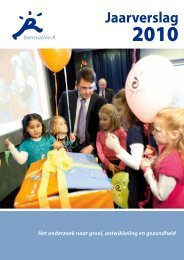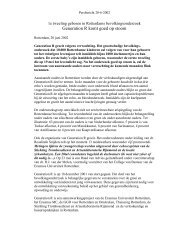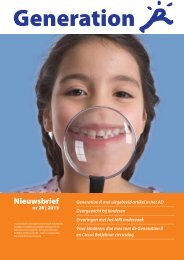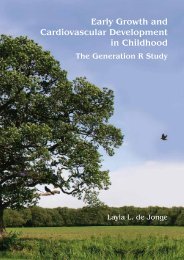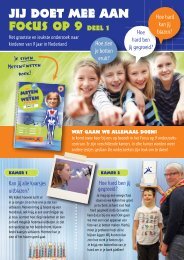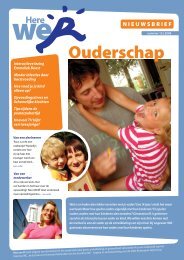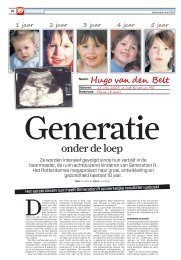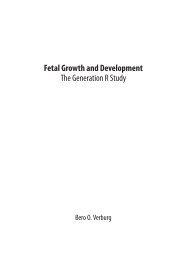Parents and infants: determinants of attachment in a ... - Generation R
Parents and infants: determinants of attachment in a ... - Generation R
Parents and infants: determinants of attachment in a ... - Generation R
You also want an ePaper? Increase the reach of your titles
YUMPU automatically turns print PDFs into web optimized ePapers that Google loves.
Chapter 1<br />
Aim <strong>of</strong> this thesis<br />
The general aim <strong>of</strong> this thesis is to provide more <strong>in</strong>sight <strong>in</strong> the role <strong>of</strong> environmental<br />
<strong>and</strong> biological factors <strong>in</strong> the development <strong>of</strong> the <strong>in</strong>fant <strong>attachment</strong><br />
relationship <strong>in</strong> the general population. In Chapter 2 the question is<br />
addressed whether maternal lifetime history <strong>of</strong> depression <strong>and</strong> peri- <strong>and</strong><br />
postnatal maternal depressive symptoms are related to <strong>in</strong>fant-mother<br />
<strong>attachment</strong> <strong>in</strong>security <strong>and</strong> disorganization. Chapter 3 extends this question<br />
to <strong>in</strong>fant-father dyads. Here we address the role <strong>of</strong> paternal psychopathology<br />
<strong>and</strong> sensitive responsiveness for <strong>in</strong>fant-father <strong>attachment</strong> <strong>in</strong> an<br />
empirical study <strong>and</strong> <strong>in</strong> a meta-analysis. In Chapter 4, we take underly<strong>in</strong>g<br />
physiological systems <strong>in</strong>to account. Here we study the association between<br />
maternal depression, <strong>in</strong>fant-mother <strong>attachment</strong> quality <strong>and</strong> child autonomic<br />
function<strong>in</strong>g, reflect<strong>in</strong>g the function<strong>in</strong>g <strong>of</strong> the child’s stress regulation<br />
system. Chapter 5 exam<strong>in</strong>es the same association us<strong>in</strong>g cortisol as a<br />
biological marker <strong>of</strong> stress-regulation capabilities. Chapter 6 addresses the<br />
question whether early structural neurobiological differences may predict<br />
<strong>attachment</strong> disorganization. In Chapter 7, we report f<strong>in</strong>d<strong>in</strong>gs concern<strong>in</strong>g the<br />
role <strong>of</strong> breastfeed<strong>in</strong>g for maternal sensitive responsiveness <strong>and</strong> <strong>in</strong>fant-mother<br />
<strong>attachment</strong> quality. F<strong>in</strong>ally, we conducted a first study exam<strong>in</strong><strong>in</strong>g the consequences<br />
<strong>of</strong> <strong>in</strong>fant <strong>attachment</strong> quality <strong>and</strong> parent<strong>in</strong>g stress for emotional <strong>and</strong><br />
behavioral problems at 3 years <strong>of</strong> age. The f<strong>in</strong>d<strong>in</strong>gs are described <strong>in</strong> Chapter<br />
8. Aga<strong>in</strong>st the background <strong>of</strong> our results, the <strong>determ<strong>in</strong>ants</strong> <strong>of</strong> <strong>in</strong>fant <strong>attachment</strong><br />
quality <strong>in</strong> the general population will be discussed (Chapter 9).<br />
18


